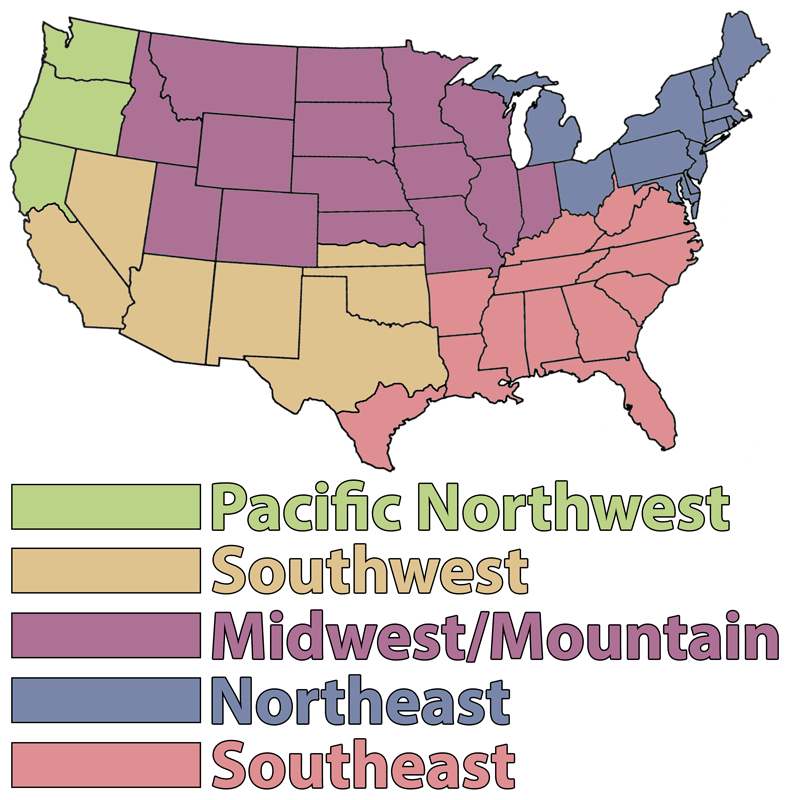Keep holiday poinsettias in a sunny, cool location with high humidity.
Gardening "To Do" Tips by Month for Dearborn Heights, MI
Use this month to check your houseplants: divide and re-pot any pot-bound plants. Prune judiciously to create a compact, attractive specimen.
Start geranium, begonia, vinca, and viola seeds now for spring and summer bloom. Begonia and vinca seeds are among the hardest to germinate, so don’t be discouraged if your success rate is low or irregular.
Avoid heavy traffic on your lawn to avoid damage in the spring.
Choose some perennials to start now from seed. Delphinium, Shasta daisy, carnation, digitalis, and armeria are good choices.
Group houseplants to increase humidity. Keep away from frosty windowsills.
Start some annual flowers this month. Good picks include marigolds, sweet peas, stattice, impatiens, petunias, and snapdragons.
Order seed catalogs early in the month. Research plants. Consider edible varieties that are drought-tolerant or disease-resistant.
Plant lettuce in flats this month and harvest before it’s time to start some of the later seedlings. Artificial light may be required, but the air should not be too hot.
Prune fruit trees now. Trim any hedges that have been damaged from snow.
Avoid walking over the same areas of your frozen lawn, or you may find bald spots in the spring.
Keep your bird feeders clean! Every month, wash with soapy water and rinse thoroughly.
Prune fruit trees now. The prunes can be gathered up into bundles to be used for kindling after they’ve dried.
Start ordering seeds. Do not wait until late in the winter, as varieties may sell out early.
Gently shake or brush off snow-weighted branches that have no support. Heavy snow cover protects evergreen foliage from windburn, but too much weight will break branches.
If you want to give your vegetables an early start, use season-extending devices such as cold frames or hot beds.
Remember to supply fresh water for the birds. Nuthatches, chickadees, cardinals, and juncos will enjoy any bread scraps you may have.
Finalize your garden plans on paper.
Organize, clean, oil, and sharpen garden tools. A splash of bright paint on tool handles will make them easier to spot out in the yard.
Fertilize your houseplants with a water-soluble fertilizer and remember to water them. Be sure not to overwater, as that can lead to plant diseases.
Plan your garden and make a diagram drawn to scale before placing your spring order.
Remember to wash and sterilize seed-starting containers before planting seeds. Use 1 part bleach to 9 parts water.
Start a garden record book now, allowing space to record the dates of first and last frosts, seed-planting dates, transplanting, time of bloom, first fruit, fertilizing, problems with pests, and what worked and didn’t work. Over a period of years, this will be an invaluable record.
When buying seeds, look for disease-resistant varieties to help keep diseases out of your garden.
Check any bulbs and tubers you may have stored to determine if moisture is okay. Repack bulbs that seem too damp, discarding any moldy ones. If bulbs seem too dry, try moving them to another location.
Provide extra protection to houseplants on window sills if it is very cold. Place cardboard between the plants and the glass. Be sure the plants don’t touch the windowpanes.
Closely inspect houseplants. Remove aphids from houseplants with a mixture of equal parts rubbing alcohol and water and add a drop of dishwashing detergent. Apply this to troubled plants with a soft brush.

